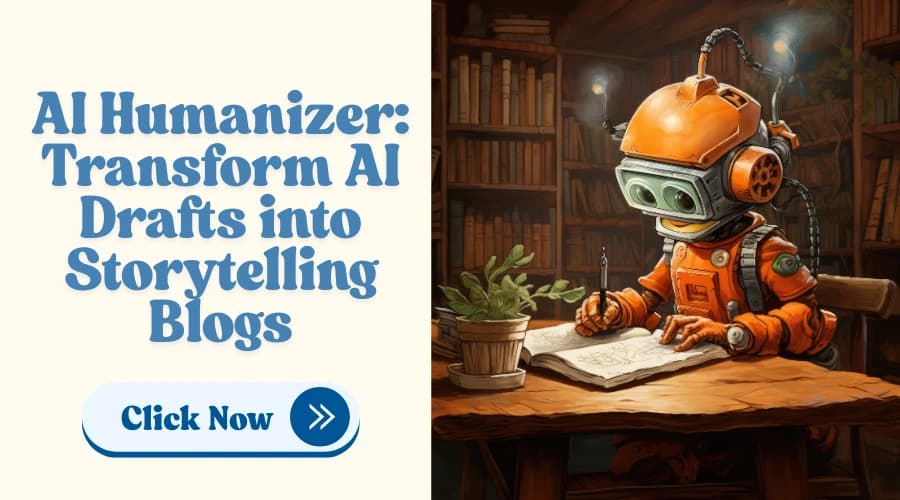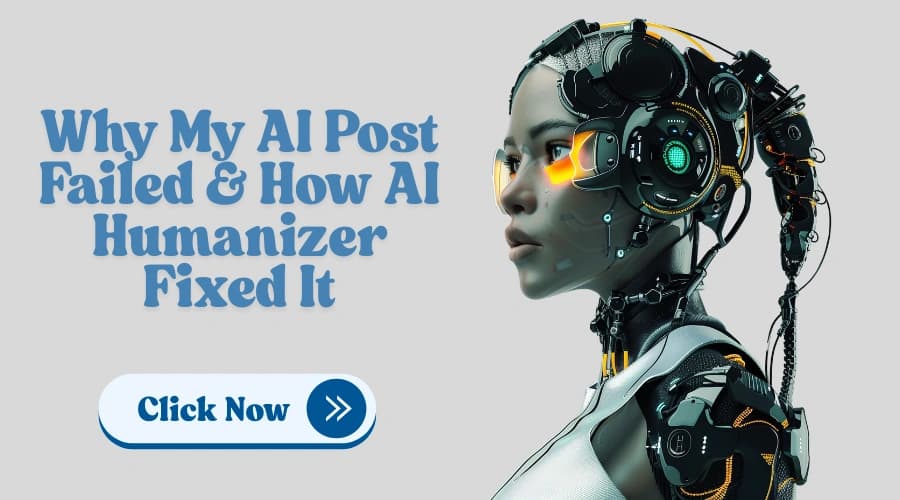It’s no secret that students today are turning to AI tools for help with writing assignments, essays, and academic content. The fast-paced and packed schedules have made students opt for tools such as ChatGPT, and others offer fast, reliable support to brainstorm, draft, and organize ideas. Thay are versatile digital partners: always available and never waste time.
Even though these AI tools are indispensable, they carry disadvantages such as the emergence of AI detection. Platforms like Turnitin now include AI checkers that scan for machine-generated content. Such a situation means that even if you only used AI to a small extent, your work will still raise the suspicion of the AI usage. You want to write smarter, not get into trouble. And this is where the story takes a turn, because it’s not about plagiarism anymore. It’s about perception.
The Real Problem Isn't Plagiarism, It's Being Flagged as a Bot
Contrary to popular belief, Turnitin’s AI detection systems aren’t just looking for copy-pasted content. But the actual aim goes deeper than that, they are looking for the usual characteristics of machine-generated text, rigid structure, repetitive phrases, and unnatural flow. So, even if your ideas are 100% original, if the text sounds too robotic, you're in trouble.
For the most part, AI tools are utilized by students responsibly, only to check grammar or remove writer's block. However, the AI checker fails to recognize the context of the situation. It reads that the content is not prepared by a human, and this makes the entire process annoying, particularly when you did the work and still it gets flagged.
The issue is not what you’re writing, but definitely how you are presenting it. And unfortunately, AI tools often don’t sound like you at all.
Is It Wrong to Use AI if You're Still Doing the Thinking?
But, if you are still doing the thinking, researching and outlining, is it wrong to seek help from AI to find your words? Think of it as a writing calculator: it helps you to do the job more quickly, but it can’t replace your understanding. The majority of students perceive AI tools as a writing assistant, not a substitute for their brainpower.
So here’s the question: if the idea is yours, the structure is yours, and the content is based on your research, should it matter if AI helped express it?
The use of AI isnot the issue. But that the text written by an AI doesn’t seem to be human. This is where the importance of humanizing AI is found, not to deceive the system, but to get communicate your thoughts in your voice. The main goal is authenticity.
How Do You Keep the Help of AI Without Getting Penalized?
It's the heart of the problem. Students want the benefits of AI, speed, structure, and assistance, without academic penalties burdening them. The question is: how do you find that middle ground?
Yes, you could do it manually, but that would waste your time, discouraging the very effect of the help you wanted. A basic paraphrasing tool can be of use, but it is often the cause of distorted messages or, even worse, it sounds artificial. As if AI is used to fix AI.
What you need is a tool that transforms AI to human text, that holds the idea but is very different in the flow and is authentic. Something smart enough to bridge the gap between AI assistance and human authenticity. This is where a purpose-built solution steps in, one designed not just to rephrase, but to re-humanize.
AI Humanizer Pro: Your Filter Between Bot and Brain
Humanizing AI is the tool that can transform AI-generated content into human writing. Think of it as a finishing layer that polishes AI-generated work, giving it the personality and tone of real student writing.
With huumanizing tool, you not just have synonyms but also a full sentence that matches the flow of the text, a structured narrative, and natural tone adjustments. You can pick up the tone you like, academic, friendly, or professional. The tool is for the students who like being authentic and safe while getting advantages from AI.
Not just any tool, it acts as if it were your personal editor, taking away the "robbotic feel," while at the same time preserving your ideas. With just a few clicks, your AI-enhanced draft becomes authentic, readable, and ready for submission. It’s the perfect balance between efficiency and ethics.
Use It Ethically, Use It Smartly
Tools like AI Humanizer are powerful, and with great power comes great responsibility. The tool is not here to help you fake knowledge. Its only aim is to help you communicate what you want to in a way that is natural and attractive to others.
Humanizing AI is basically about adjusting text to reflect your personality, your style, your ideas, and your plan. It enables you to purify your priority and not to be substituted. Thinl of it as upgraded version of Grammarly and stealthwriter, as it includes not only grammar but also speaking naturally? Especially now that AI chekcers are strict and getting smarter day by day.
Still, when humanizing tool is used ethically, it becomes a bridge connecting your effort and the positive result of academics. It’s not a shortcut, it’s a refinement tool for your voice.
Final Word: Humanizing AI Isn’t Cheating, It’s Adapting
The academic world is evolving, and so must your approach. With AI Humanizer Pro, students can continue using AI to support their writing without the fear of detection tools like Turnitin misreading their intent.
By turning AI-generated drafts into human-sounding content, you’re not cheating, you’re adapting to a new reality. Writing today isn’t just about being correct, it’s about being believable. And for that, humanizing AI is no longer optional.
Whether you're an overwhelmed student or a perfectionist looking to elevate your work, AI Humanizer Pro gives you the edge, ethically, efficiently, and effectively.






